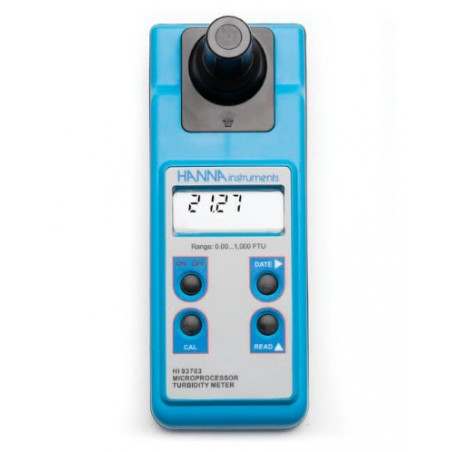






Specially designed for water quality measurements, even within low turbidity intervals. This turbidimeter complies with RD 487/2022 of Legionellosis. Meets and exceeds the measurement criteria specified by ISO 7027.
Device description
This turbidimeter complies with RD 487/2022 of Legionellosis
Turbidity description
ISO 7027:1999 requirements
The requirements for an optical turbidimeter to perform the measurement of diffuse radiation used in low range measurements (i.e. drinking water), expressed in nephelometric units of formazin according to ISO 7027:1999 are:
Operating principle
General characteristics
Technical data
Presentation
Expected Date: 05/06/2024

Hanna Instruments is the world leader in laboratory equipment innovation. It develops and manufactures technically advanced instruments that are easy to use for electrochemical and photometric measurements, and electrodes.
| 2 Comments |
What is a turbidimeter?
A turbidimeter is a laboratory instrument used to measure turbidity, or the amount of suspended particles in a liquid.
What is turbidity?
Turbidity is the lack of transparency of a liquid due to suspended particles such as organic matter, sediment, or other suspended solids.
These particles scatter or block light passing through the liquid, causing a decrease in transparency.
How does a turbidimeter work?
The turbidimeter emits a beam of light through the sample of the liquid to be measured, and calculates the amount of light scattered or absorbed by the suspended particles.
The most common unit of measurement for turbidity is the nephelometric turbidity unit (NTU) or the formazine nephelometric unit (FNU).
The higher the NTU or FNU value, the higher the turbidity of the sample.
What is a turbidimeter used for?
Turbidimeters have many applications such as water quality control, both in the food industry and in agriculture and livestock, environmental monitoring, and scientific research.
They are especially important in water treatment, since they evaluate the effectiveness of the filtration and clarification processes, ensuring that the water meets the established quality standards.